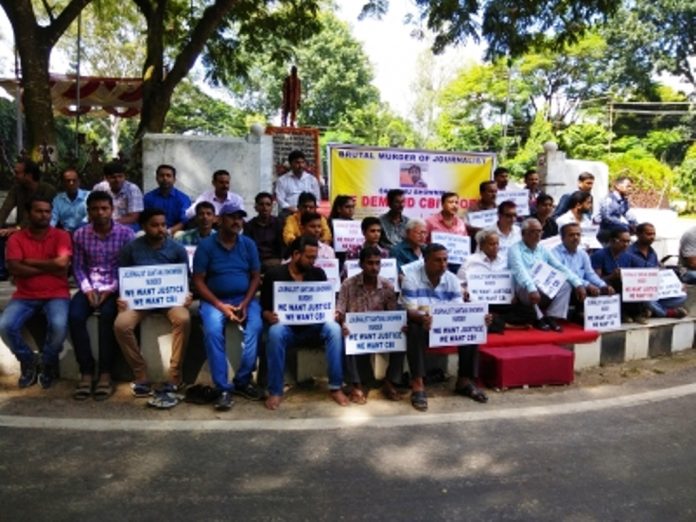New Delhi, (IANS): Hundreds of journalists on Monday formed human chains at various places across the country to protest intimidation of the media and the killings of scribes, including the murders of Gauri Lankesh in Bengaluru and Shantanu Bhowmick in Tripura, and to draw attention towards “increasing intolerance against criticism”.
Scores of scribes turned up at the Press Club of India (PCI) here and formed a human chain in the heart of the capital to express their solidarity with their colleagues who were killed in the line of duty.
The protests on the occasion of Gandhi Jayanti were organised by various media associations, including the Press Club of India, Federation of Press Clubs in India, Indian Women’s Press Corps, Press Association, Kerala Union of Working Journalists and Indian Journalists Union.
The trigger for the protests were the killings last month of Lankesh, the editor of Karnataka-based Lankesh Patrike, who was shot dead at her own doorstep, and Bhowmick, who was abducted and later hacked to death by a tribal group in Tripura while he was covering a fight between two local factions.
According to data compiled by an independent non-profit organisation ‘Committee to Protect Journalists’, at least 10 journalists have been killed in India since 2014 for various reasons.
“Silent protests, meetings and human chains were organised in various state capitals and cities under the aegis of press clubs in the country to draw attention to the killings, threats and intimidation of journalists,” a joint statement from the media associations said.
“Expressing concern at the growing incidents of attacks on sections of the media fraternity across the country – the symbolic protests on October 2 sent out one single message – violence against journalists in any form will not be tolerated in the land that preaches non violence.”
The protests were held to draw attention to the “increasingly unsafe environment for journalists, the misogynistic and abusive targeting of media persons for their views on online forums, covert and overt threats to physically harm journalists for holding different opinions and increasing intolerance against criticism”.
They resolved that journalistic freedoms and the right to dissent needed to be protected and the right to freedom of expression needed to be upheld in the interests of India’s liberal secular democracy.
The protesting journalists later signed a memorandum to be given to Union Home Minister Rajnath Singh “requesting his intervention for a status report on attacks against journalists in various states and action in this regard”.


